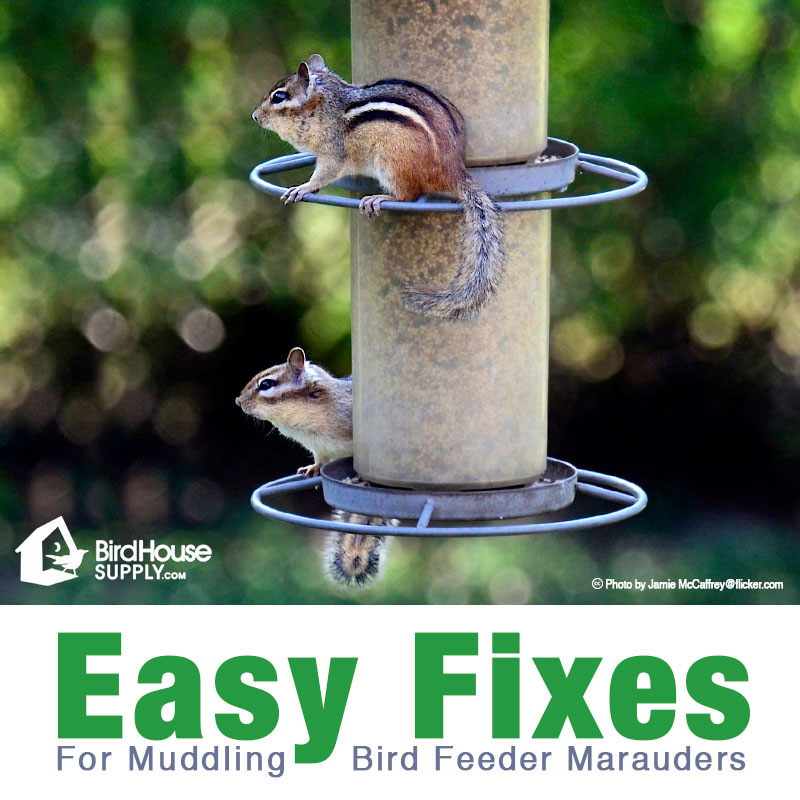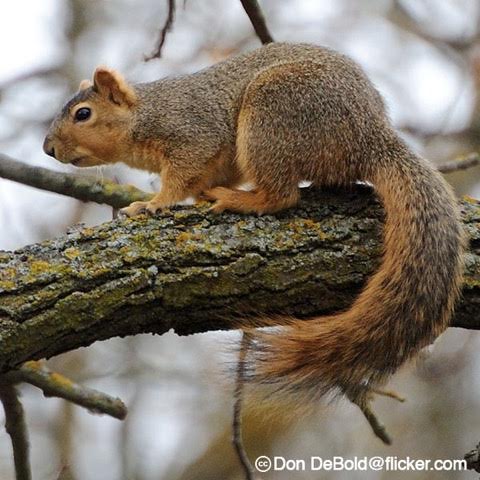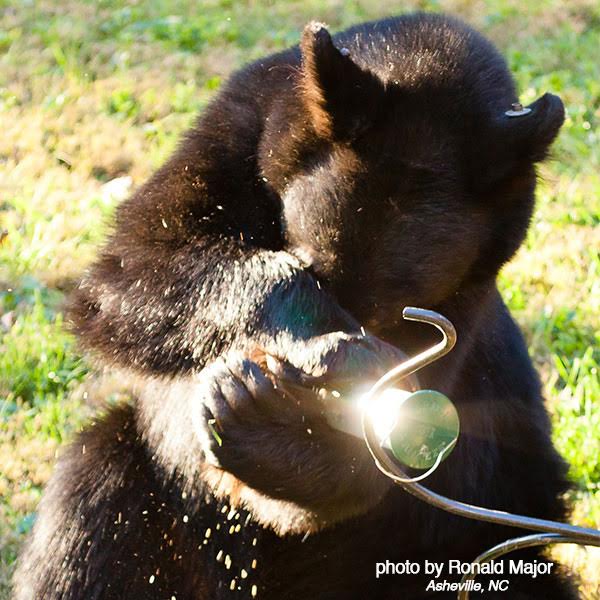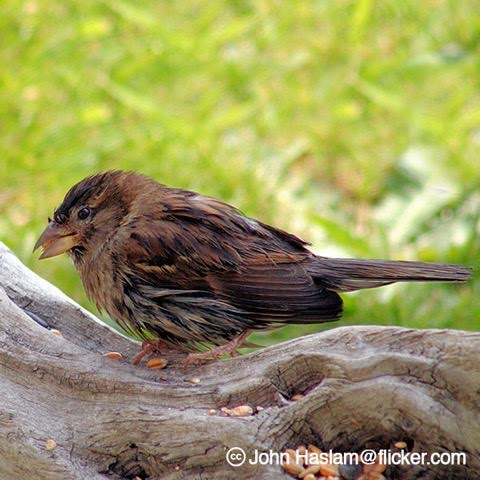You set out your feeding stations. You enjoy the glint of sunflower seed through the sparkling clean hopper. You sit back and wait. And …There they come – luminous cardinals, the lemony goldfinches, and darting chickadees. Beautiful! Until the next morning… Your feeder is on the ground. Seed seems scattered everywhere and cracked perches droop off to one side. Your little birdy café just received an impromptu closure. Sigh…
You have seed marauders. Who did this deed? What can you do to foil the seed snatchers and better yet – put out the unwelcome sign to nip these nuisances in the bud?! Fret not! We will you. But first, you must take a look at a lineup and understand what creatures are on the wanted list.
The “Wanted” List
There are repeat offenders when it comes to bird feeder disasters. They are just like the photo son the Sheriff’s station wall… Dangerous. (Well, when it comes to your bird feeders, anyway.)These are a few characters most wanted for messing with your birds’ meals. If you find your feeders robbed, the following animals are the most likely culprits:
Raccoons
These cute scavengers can wreck havoc at your feeding area. Some raccoons can grow close to 50 pounds in weight. That is no small critter hitting your prized feeders!
With their dexterity and intelligence, raccoons can open containers many containers. They love to outwit the tightest lid systems. These nocturnal visitors can be discouraged in a few ways.
Raccoon Prevention Solutions:
- Bring feeders in at night. This is cumbersome, but it may serve as a quick fix to deter the masked thieves.
- Buy squirrel-proof feeders and weight-activated, trap system feeders.
- Try hanging saucer baffles over feeders and cone baffles under feeder poles, which can also foil raccoons.
- Suspend suet from thin branches or tie it to a clothesline cable (like a high-wire) attached to two end points.
Black Bears
Black Bears are intelligent and big (150-600 pounds) critters that can destroy feeding stations. Bears are omnivores and roam their territories searching for easy pickings. They will eat anything and their talented noses lead them to food. They may have one of the best-developed senses of smell of any mammal. One Yosemite park ranger informs us that:
“[The] area inside a black bear’s nose, called the nasal mucosa, is 100 times greater than ours … Even bloodhounds, dogs so famous for their sense of smell that they’re used to track missing people, don’t smell as well a black bear.”
This means your bird feed is toast. Scent repellents do not work with bears. If you have dogs, their presence may convince the shy bears the bird feeders aren’t worth the effort. Bears will push over or tear down feeder poles. They are superb climbers and will collect feeders hanging in trees with ease. Preventing bears from grabbing your suet or seed is impossible. If you have an orchard or garden you are creating a bear habitat. Human living areas are bear habitats! Cooking smells, garbage, pet food – the bears can smell it all!
Bear Solutions
- If bears are a problem, remove feeding stations until they go into hibernation is the easiest. This happens anywhere from October to December). Removing feeders during the spring through summer seasons can deter bear traffic.
- The only other solution is electric fencing. You can run the wire around your perimeter or just in those areas you want bears to avoid. Buy a livestock energizer (electric or solar) that will deliver the recommended 5,000 volts. Follow the manufacturer’s directions when installing the fence.
Rodents
Many a bird enthusiast took the blame for creating a rodent hotel. This is NOT true. Rats and mice are rarely interested in bird feeders. If you want to build a rodent habitat, provide appealing shelter! These animals naturally seek out wood stacks, old sheds and your house – it is shelter that draws them in. Seal up old sheds and use repellents around woodpiles. Other ways to prevent rodents include…
Rodent Repellent Solutions
- Avoid putting food on the ground. Provide tray feeders for the ground feeding birds. Rats and mice will rarely climb up to access a bird feeder.
- Provide high-quality feeds for your feeders to cut down on seed tossing and waste.
- Clean beneath feeding areas and apply predator scents in the vicinity.
- If you do have a rat issue, pick up squirrel-proof feeders or affix a baffle over the feeder.
Note: Never use grease or oils to “slip-up” around feeders or poles. The oils are very dangerous to songbirds!
Deer
These graceful woodland creatures do not hibernate. Hungry deer won’t pass up a bird seed meal when the temps fall and the snow gets thick. Although, rarely an issue, deer have been known to visit feeding stations. Deer usually do not hang around – but as with any critter, each situation is unique.
Dear Solutions
- Hang corn and feeders from higher branches. Deer can rear up to well over 6 feet!
- Try sprinkling feeders and seed with hot pepper – this won’t bother birds, but it will surprise the mammals. Avian species do not register the heat in peppers. You can also purchase pepper flavored seed mixes.
- Ring the feeding area with chicken wire or other fencing types. If you have a significant deer issue, you may also have bear. In that case, investing in an electric fence may be the best option.
Skunk
These delightful nocturnal visitors rarely mosey around bird feeders. They much prefer rooting up grubs and taking a gander at your compost and pet food bowls. Skunks are quiet, gentle and introverted. These black and white fluff balls won’t pose a threat unless you or Fido spook one!
Skunk Solutions
- Tightly close garbage and compost bins. Skunks are master excavators so ensure subterranean access is limited.
- Ring compost bins with stones, wood or chicken wire. Repellents don’t work on skunks – don’t waste your money.
- These compact critters don’t climb. Bird feeders hung at normal heights will be skunk-proof.
- Clean up the waste under feeders and place bird snacks on feeding platforms.
Squirrels
Who hasn’t seen these furry toupees suspended from a feeder? Squirrels are curious and clever. Their antics are often worth losing some seeds over! For most birdwatchers, squirrels are a minor issue. Many people set out special feeding areas stocked with squirrel delights. The Cornell Lab of Ornithology reminds us to never use any grease or oil on poles, feeders or limbs. Even non-toxic oils pose a serious threat to wildlife – think oil spill clean up. Oils and critters do not mix.
Squirrel Solutions
- Set out separate feeding stations, one for songbirds and another full of squirrel favorites. Choose from a wide selection of fun and whimsical styles – they are worth checking out!
- If the furry marauders persist in munching, hang squirrel-proof feeders. These come in a variety of styles and operating mechanisms. Choose from models that actively spin or twist to shift squirrels from the hopper or weighted feeders. Brome manufactures several feeder options that foil squirrels as well as larger intimidating bird species. These feeders are weight triggered. When the bird or animal descends to the feeder, a trap closes over the feeding ports.
- Choose feeders that are made from metal to prevent chewing damage. Wood and plastic are sure to be gnawed to nothing by curious squirrels.
- Attach baffles to poles beneath the feeder. These come in standard sizes, but all serve to prevent climbing up the pole to reach your feeder.
- Choose dish baffles to suspend above hanging feeders. These saucers are wide and unstable, preventing the squirrels from shimmying down chains to access the feeder.
- Purchase birdseed that is coated in hot pepper. This will deter the critters but the birds won’t notice a thing!
Chipmunks
Chipmunks are not usually an issue, but they can be devious seed thieves.Chipmunks hibernate in their burrows during the winter season. Unlike bears or other true hibernating animals, chipmunks wake up regularly to grab a snack. They stock their winter burrows with seed and other foodstuffs for this purpose.Your feeder and seed stash are the perfect grocery stores for these ground squirrels to fill their larders!
Chipmunks rarely climb to enter feeders. Be sure to clean under the feeders – although, chipmunks busily stocking up will do a great job for you.
Chipmunk Management Solutions
- Store feed in durable containers, not in the bags they are sold in. If rodents or chipmunks are a significant problem, you will need to store the bird feed in a metal bucket.
Are You Predator Baiting?
In the fall, hibernating animals pack on the calories to help them survive the coming months. Birdseed and treats are strong draws to omnivorous wildlife. These foodstuffs are high in fat, sugars and proteins. They exude a luxurious smell that few furry noses can ignore.
Feeds likely to draw scavengers:
- Apples, pears, dried fruits
- Nuts (tree and ground)
- Suet cakes, nuggets or logs
- Mealworms, bluebird pellets, dried insects
- Sunflower seed, cracked or whole corn, seed mixes
- Bread and other baked goods
The reason we set out these delights is BECAUSE they are nutritious for the songbirds. However, that is exactly the problem. Predation is a natural process. Setting out bait areas to make a predator’s mission easier is not.
When we set out feeding areas we create an unnatural draw that allows for unusual animal densities. This creates two problems. The first is an increase in disease proliferation. The second being a “hot spot” for predators to glean some distracted easy pickings. Visit Cornell’s bird feeding page to read more about keeping birds safe.
Keeping birds safe
You should provide feed for songbirds. But you need to be aware of mitigating the cons. You can do this in many ways. Try a few, or all, of these in your backyard.
- High population numbers increase the spread of disease. You will need to ensure bird feeders, and the ground around them, stays clean.
- Depending on the traffic to your feeder, plan on cleaning the fixture every two weeks. You can scrub it with soapy water and rinse. Another great method is to mix up some Oxine solution and dunk or spray the feeder.
- Sprinkle garden lime under the feeders. Then, rake up the spent shells and spoiled feedstuffs. Spray the ground, hanger, or tree limb and feeder cable with the Oxine solution.
- Avoid setting all your feeders in one area. You want to spread the birds out. This ensures that quieter species get a chance to feed. It also creates a significant diversion for predators. Birds-of-prey are sight hunters and they zero in on the action around your feeders.
- Place feeders in an open area that is near dense cover. Avoid setting feeders near walls, fences or other barriers that can trap fleeing birds. Hawks use surprise to catch their prey and they will run birds into closed spots to snag them. Check to make sure the birds have an open 360˚ escape route around feeders and bird baths.
- Feral and domestic cats pose a grave threat to songbirds. Set up a cat-safe feeding station. This will ensure your birds are not part of the estimated 20-30% harvested by cats.
- Hang feeders roughly five feet from the ground. You may need to go higher as some feline breeds, like Bengals and Abyssinians can leap well over 6 feet.
- Set feeders and waterers away from any cover where cats could lurk.
- Lay chicken wire around the feeders, as cats dislike the feel of the wire. You can also use animal deterrent sprays and granules.
- Purchase an ultrasonic device or motion activated “squirt” repeller to thwart predators.
- Keep your cats indoors to prevent unwanted bird kills and for the safety of the pet.
Note: It is illegal to poison or kill domestic cats and birds-of-prey. If feral cats are an issue, contact your local animal control or humane society. Have feeder thieves in your yard?
Please leave a comment on your experiences and your creative solutions.
We love to hear to from you!






